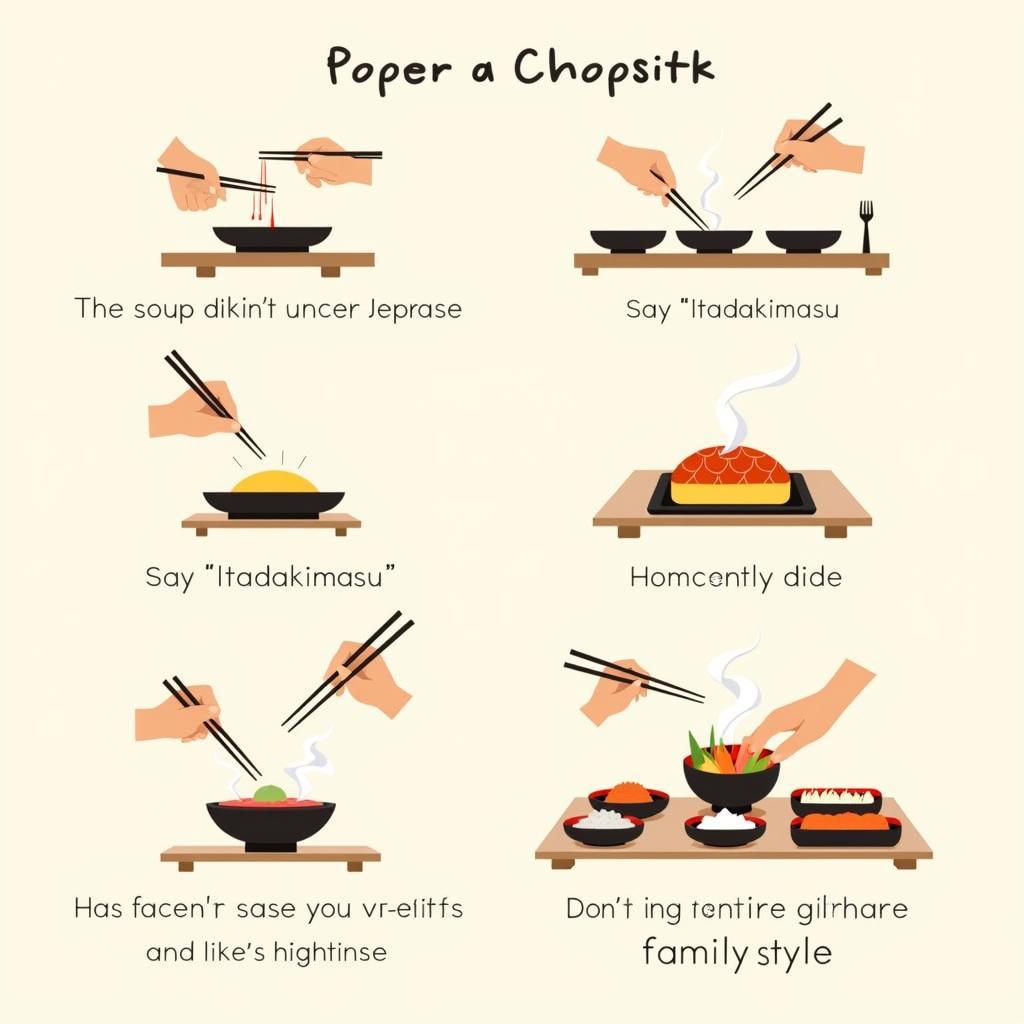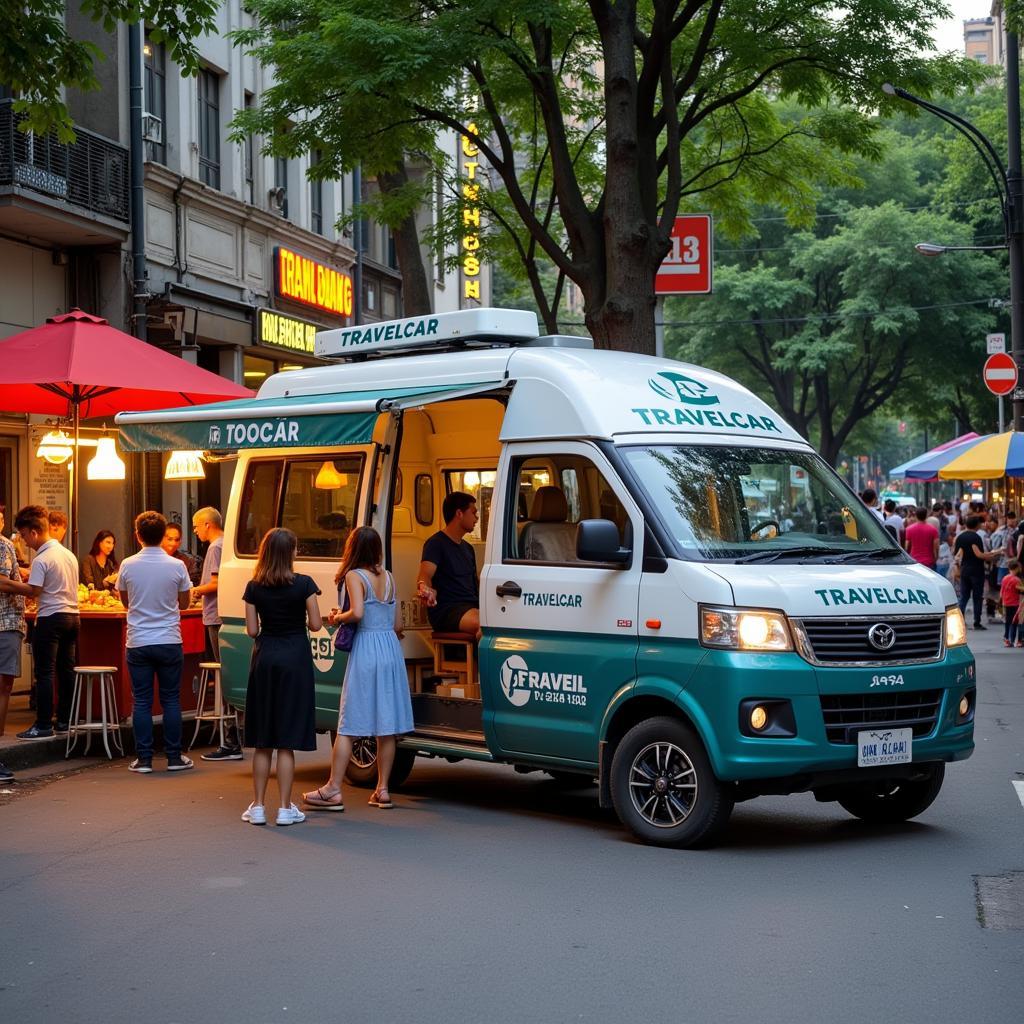Learning how to introduce Japanese food in Japanese can enrich your dining experience and impress your companions. Whether you’re ordering at a restaurant in Japan or simply sharing your love for Japanese cuisine with friends, knowing the proper vocabulary and etiquette can make all the difference. This guide will equip you with the essential phrases and cultural insights to confidently navigate the world of Japanese culinary delights.
Essential Japanese Phrases for Introducing Food
Mastering a few key phrases can transform your interactions with Japanese cuisine. Here are some must-know expressions:
- これは何ですか (Kore wa nan desu ka?): This is the most basic and polite way to ask “What is this?” It’s perfect for inquiring about a dish you’re unfamiliar with.
- [Dish name] はありますか ([Dish name] wa arimasu ka?): Use this phrase to ask if a particular dish is available. Simply replace “[Dish name]” with the name of the food you’re looking for, such as “sushi” or “ramen.”
- [Dish name] をください ([Dish name] o kudasai): This is how you order a specific dish. Replace “[Dish name]” with your desired item. Adding “o kudasai” makes your request polite and respectful.
- お勧めは何ですか (Osusume wa nan desu ka?): This translates to “What do you recommend?” It’s a great way to discover hidden gems and local specialties.
- 美味しいです (Oishii desu): This simple phrase means “Delicious!” It’s a wonderful way to express your appreciation for a well-prepared meal.
Navigating the Japanese Menu
Japanese menus can be overwhelming, especially for first-time visitors. Understanding the common categories and dishes will help you make informed choices:
- Sushi (寿司): This iconic Japanese dish features vinegared rice topped with various ingredients, including raw fish, seafood, and vegetables.
- Ramen (ラーメン): A hearty noodle soup dish with a rich broth, typically flavored with soy sauce or miso.
- Tempura (天ぷら): Lightly battered and deep-fried seafood and vegetables.
- Udon (うどん): Thick wheat flour noodles served in a flavorful broth.
- Soba (そば): Thin buckwheat noodles often served cold with dipping sauce or in a hot broth.
Cultural Considerations When Introducing Japanese Food
Beyond the language, understanding Japanese culinary customs enhances the dining experience. Here are some key points to remember:
- Using chopsticks: It’s considered polite to use chopsticks correctly. Avoid sticking them upright in your rice bowl, as this resembles a funeral ritual.
- Slurping noodles: Slurping noodles, especially ramen and udon, is perfectly acceptable and even encouraged in Japan. It’s seen as a sign of enjoyment.
- Sharing dishes: Many Japanese meals are served family-style, with dishes placed in the center of the table for everyone to share.
- Saying “Itadakimasu”: Before starting your meal, it’s customary to say “Itadakimasu,” which expresses gratitude for the food.
 Japanese Dining Etiquette
Japanese Dining Etiquette
Beyond the Basics: Describing Japanese Food in Detail
Once you’ve mastered the basic phrases, you can expand your vocabulary to describe Japanese food in more detail. Here are some useful adjectives:
- 甘い (Amai): Sweet
- 辛い (Karai): Spicy
- 酸っぱい (Suppai): Sour
- しょっぱい (Shoppai): Salty
- 苦い (Nigai): Bitter
“Understanding the nuances of Japanese flavors allows you to truly appreciate the artistry of Japanese cuisine,” says renowned food critic, Hiroyuki Sato. “By using specific adjectives, you can communicate your preferences and discover new dishes that cater to your palate.”
Introducing Japanese Food with TRAVELCAR
TRAVELCAR offers a range of transportation services, including 16-seater, 29-seater, and 45-seater vehicle rentals, perfect for exploring Hanoi and discovering its culinary treasures. We also provide airport transfers and customized food tours to enhance your Japanese food experience in Hanoi.
 TRAVELCAR Hanoi Food Tour
TRAVELCAR Hanoi Food Tour
In conclusion, learning how to introduce Japanese food in Japanese not only enhances your dining experience but also demonstrates respect for Japanese culture. By using the phrases and tips outlined in this guide, you can confidently navigate the world of Japanese cuisine and discover its incredible flavors. Contact TRAVELCAR for your transportation needs in Hanoi and let us help you explore the city’s vibrant food scene. Need support? Contact us at Phone: 0372960696, Email: TRAVELCAR[email protected], or visit our office at 260 Cau Giay, Hanoi. Our customer service team is available 24/7.
FAQ
- What is the most polite way to ask “What is this?” in Japanese? (Kore wa nan desu ka?)
- How do you say “delicious” in Japanese? (Oishii desu)
- What is the proper etiquette for using chopsticks in Japan? (Avoid sticking them upright in your rice bowl.)
- Is it okay to slurp noodles in Japan? (Yes, it is encouraged.)
- What are some common categories of Japanese food? (Sushi, Ramen, Tempura, Udon, Soba)
See also our articles on Hanoi street food and Vietnamese cuisine.

